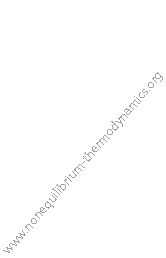

|
| 5th International Workshop on Nonequilibrium Thermodynamics IWNET 2009 |
|
Home Scope Location Invited speakers Program Book of abstracts Author index Organizing committee Scientific committee Venue Registration Accommodation Contact  |
Talk T18 Wednesday 11:15 Pattern formation and morphology evolution in Langmuir monolayers Instituto de Fisica, UNAM. P. O. Box 20-364, D. F., Mexico 01000 Abstract: We present a study of how patterns formed by Langmuir monolayer domains of a stable phase, usually solid or liquid condensed, propagate into a metastable one, usually liquid expanded. During this propagation, the interface between the two phases moves as the metastable phase is transformed into the more stable one. The interface becomes unstable and forms patterns as a result of the competition between a chemical potential gradient that destabilizes the interface on one hand, and line tension that stabilizes the interface on the other. Heat is not playing a role. During domain growth, we found a morphology transition from tip splitting to side branching, doublons were also found. The fractal dimension was also measured. These morphological features were observed with Brewster angle microscopy in three different monolayers at the water/air interface: Nervonic acid, dioctadecylamine, ethyl palmitate, and ethyl stearatem etc. We observed the onset of the instability in round domains when an abrupt lateral pressure jump is made on the monolayer. Frequency histograms of unstable wavelengths are consistent with the linear-instability dispersion relation of classical free-boundary models. Evolution of the fractal dimension as growth evolves has been measured. In addition, we developed a technique for measuring the expanded phase approach velocity in the neighborhood of the growing solid domain, using silica microspheres. Our experiments show evidence of a density profile around the growing domain. A model explaining why Langmuir monolayers present this kind of non-equilibrium growth patterns is presented. At the steady state, the growth behavior is determined by Laplace.s equation in the chemical potential with specific boundary conditions. These equations are equivalent to those used in the theory of morphology diagrams for two-dimensional diffusional growth, where morphological transitions of the kind observed here have been predicted. |
| ||
 |
||||
|
©
|